When the Pac-12 expanded to 12 teams and split into divisions in 2011, it was easy to make assumptions about where the balance of power might end up lying. Sure, Oregon and Stanford had just peaked, but Jim Harbaugh was leaving Stanford, USC was only a couple of years removed from a seven-year run of dominance, and up north, Washington was a couple of years removed from going 0-12. At best, it felt like balance. At worst, it felt like the South division was going to control matters.
Instead, the North has dominated. Oregon and Stanford combined to win the first five titles, and Washington has won two of the past three. USC has made the title game only twice and won only once. Other South teams — every single one has made it to the game at least once — are 0-6. Maybe this will change if Utah gets even better or USC’s new offense takes flight. More likely, though, we’re looking at another year of North dominance. Oregon is loaded with experience, Washington has talent and a track record, and Stanford gets both the Ducks and Huskies in Palo Alto. Wazzu looms. Cal could have the best defense in the country.
There might not be a national title contender out west this season, but if one exists, it probably is in the Pacific Northwest.
Meanwhile, we’ll probably know what we need to know about the Pac-12 South by the evening of Sept. 20. That’s the day defending division champ and extreme known entity Utah faces perpetual high-ceiling enigma USC in the L.A. Coliseum. If the hometown Trojans win, we could have a fascinating, up-for-grabs battle royal once again in the South. If the Utes prevail, we could be on our way to a second coronation.
The South is forever in flux, and unless Chip Kelly and UCLA have a second-year leap in them (not impossible), we probably know what we’re getting this time around. The two big Los Angeles schools loom on paper, and a couple of exciting but questionable Arizona teams could throw us for a loop, but Utah has experience in the backfield, one of the best defensive lines in the sport and the most proven coach, long-term, in the division. That’s a lot to overcome.
A quick reminder on terminology: S&P+ is the tempo- and opponent-adjusted efficiency measure I created at Football Outsiders in 2008.
Teams are listed below in order of S&P+ projections. Jump to Pac-12 South.
Pac-12 North
Jump to a team:
Washington | Oregon | Stanford
Washington State | California | Oregon State
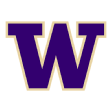
2018 record and rankings: 10-4 (No. 14 in S&P+, No. 10 in FPI)
2019 S&P+ projection: 9.2 wins (No. 15)
2019 FPI projection: 9.1 wins (No. 17)
Strength: A high floor. Linebacker and conference defensive player of the year Ben Burr-Kirven. Second-round safety Taylor Rapp. Second-round cornerback Byron Murphy. Meaty fourth-round tackle Greg Gaines. Fifth-round cornerback Jordan Miller. Most of the Huskies you could name on defense last season are gone.
Now give me your instant, word-association-game answer for how worried you are about the UW defense. “Not very,” right?
After the past three years, Chris Petersen and his staff (namely, coordinator Jimmy Lake and co-coordinator Pete Kwiatkowski) get the benefit of the doubt on D. Two years ago, they lost three second-round DBs and tackle Elijah Qualls and fell only from fourth to 13th in defensive S&P+. Last year, they lost Vita Vea and two linebacker draftees and rose back to fourth. This year, the losses are substantial enough that UW is projected to fall back to 16th. That seems like the absolute floor.
Weakness: Merely average explosiveness. Washington’s offense was impossibly steady over the years with Jake Browning at quarterback. The Huskies would peck you to death with third-and-medium conversions, then pounce when you got impatient. But they weren’t all that explosive last season: 29th in marginal efficiency but just 91st in marginal explosiveness.
Their big plays were 20-yarders, not home runs. They had just 12 gains of 40-plus yards, 83rd in FBS. Maybe that changes with Georgia transfer Jacob Eason behind center instead of Browning; we know there are potential big-play options in receivers Aaron Fuller, Ty Jones and Chico McClatcher, back Salvon Ahmed and recent blue-chip signees. The main question is will the Huskies sacrifice efficiency in the transition?
Opportunity: A breaking-in period. The Huskies are attempting to win their third Pac-12 title in four years, and four of the five toughest opponents on the schedule visit Seattle. That results in Washington being a projected favorite in every game per S&P+ and 11 of 12 per FPI. Plus, of those five toughies, the first one doesn’t show up on the schedule until Game 5. That’s plenty of time to break in some new pieces.
Threat: Too much change. Petersen and the Huskies absolutely get the benefit of the doubt, but this is a lot of turnover, probably the most yet. On paper, the fruits of recent recruiting should be able to handle things well, but if UW drops more than projected, the door in the North is wide open.

2018 record and rankings: 9-4 (No. 41 in S&P+, No. 31 in FPI)
2019 S&P+ projection: 8.1 wins (No. 20)
2019 FPI projection: 9.7 wins (No. 10)
Strength: Massive experience. A lot of this year’s Oregon hype has been based on the simple fact that quarterback Justin Herbert is still wearing the green and yellow (or whatever color they are in a given week) jerseys. He spurned the pros to win more games in Eugene, and that’s great, but his supporting cast deserves headlines too.
Oregon returns two sophomore RBs who combined for 2,138 rushing and receiving yards, four of last year’s top five receivers, 153 career starts on the offensive line and almost all of last year’s defensive line and secondary. The Ducks could undergo a pretty significant transition in 2020. Now’s the time for a run.
Weakness: Consistency. Mario Cristobal’s Ducks had plenty of things going for them last season: Herbert’s right arm, outstanding red zone execution, a super-active linebacking corps, etc. But in open-play situations (which I define as snaps between your 10 and your opponent’s 30), their offensive success rate was just 46%, 85th in FBS. They allowed 46.3% (58th).
The Ducks were constantly having to catch back up to the chains, and though they usually did so, this is a recipe for random blips and bad performances such as, say, a 15-point dud against Arizona or a seven-point output against Michigan State.
Opportunity: Lessons learned. The two weeks after Oregon’s biggest 2018 triumph defined the Ducks’ season. After suffering a heartbreaking home loss to Stanford in September, the Ducks kept playing well, drilling Cal in Berkeley before returning home and knocking off Washington 30-27 in overtime.
It was seen as a breakthrough moment of sorts, but they followed that conquest by falling behind 27-3 to Washington State and losing by 14. Then they went to Arizona and laid an outright egg, losing 44-15. They rebounded to win four of five down the stretch, but in theory, they learned a pretty clear lesson about what happens when you let down your guard. To live up to likely top-10 expectations, you have to respond to great performances with even greater ones.
Threat: Road trips. Oregon plays four teams projected 35th or better in S&P+ this fall: Auburn, Stanford, Washington and USC. None of them comes to Eugene. Not only do the Ducks have to improve their consistency to live up to expectations, but they also have to figure out how to win at least a couple of huge road games.

2018 record and rankings: 9-4 (No. 26 in S&P+, No. 21 in FPI)
2019 S&P+ projection: 6.7 wins (No. 32)
2019 FPI projection: 6.2 wins (No. 33)
Strength: K.J. Costello. Which quarterback would you choose?
-
QB A: 59% completion rate, 7.8 yards per pass, 135.1 passer rating against Power 5 defenses, 140.0 passer rating in November and beyond
-
QB B: 65% completion rate, 8.6 yards per pass, 157.4 passer rating against Power 5 defenses, 153.5 passer rating in November and beyond.
QB A is 2018 Herbert, and QB B is 2018 Costello. For all the hype Herbert receives, Costello put up better numbers last fall. Over the second half of the regular season, Costello was asked to throw five more passes per game, and Stanford scored eight more points per game. That probably isn’t a coincidence.
Weakness: Costello’s supporting cast. Stanford has to replace not only running back Bryce Love (who admittedly struggled in 2018) but also receivers JJ Arcega-Whiteside and Trenton Irwin, tight end Kaden Smith and four starters on the offensive line.
The saving grace might be last year’s injuries. Love struggled with ankle issues, which meant Cameron Scarlett, Trevor Speights and Dorian Maddox got more time in the lineup. With no lineman managing to start all 13 games, plenty of 2019 returnees got experience. There’s still a hole at WR, though. The sophomore trio of Osiris St. Brown, Michael Wilson and Connor Wedington boasts blue-chip potential but combined for only 31 catches last season.
Opportunity: Spoiler potential. Stanford might have too much turnover to deal with to end up a North contender this season, but the Cardinal could still determine who wins the division. They host Oregon on Sept. 21 and Washington on Oct. 5. Any lingering CFP hopes Notre Dame has might come to an end with a Nov. 30 trip to Palo Alto. Stanford Stadium isn’t known to provide the biggest home-field advantage in the world, but it could make a difference.
Threat: A defense that can’t pick up the slack. If there’s any sort of drop-off on offense, Stanford might not be able to count on the D to make up the difference. It has seven starters to replace, and there might be as little as one senior starter in the lineup. There is potential star power in players such as end Jovan Swann, linebacker Jordan Fox and amazing sophomore corner Paulson Adebo, but both depth and experience will be major issues.

2018 record and rankings: 11-2 (No. 31 in S&P+, No. 18 in FPI)
2019 S&P+ projection: 7.4 wins (No. 36)
2019 FPI projection: 7.4 wins (No. 30)
Strength: Knowing yourself. Aside from maybe the triple-option service academies, no team understands itself and its identity better than Mike Leach’s Wazzu. The Cougars are going to throw the ball more than anybody else, they’re going to keep the playbook pretty simple, they’re going to avoid negative plays, and they’re going to score lots of points. They’re going to force you to prepare for them — not the other way around.
Granted, last season’s offense was even better than normal, thanks to the incredible work of grad transfer Gardner Minshew, who is now gone. Whether the new starter is Eastern Washington transfer Gage Gubrud or a career backup such as Trey Tinsley, let’s not pretend things are going to change all that much. The next time Wazzu throws for fewer than 4,600 yards in a season will be the first time since 2012, Leach’s first year in Pullman.
Weakness: Run defense. If you were relying on your passing game to beat WSU, you were in serious trouble. The Cougs ranked 20th in sack rate and 33rd in passing marginal efficiency allowed.
That might have mattered more, though, if Wazzu weren’t so shaky against the run: The Cougars were 115th in rushing marginal efficiency, and struggles up front were particularly costly in their two losses.
With five of last season’s top seven DBs gone, the pass defense will almost certainly regress. That puts even more pressure on a run front that loses three of five linemen and its leading tackler, linebacker Peyton Pelluer.
Opportunity: A crowded race. It’s a small-sample exercise, but WSU has lost six straight Apple Cup battles against Washington, all by double digits. In 2018, UW’s ownership of the state rivalry prevented the Cougs from the Pac-12 North title.
Even if said ownership continues, Wazzu could benefit from a crowded North race if its own series dominations — namely, four straight wins over Oregon (the past three by double digits) and three straight over Stanford — continue. If this is a race to 6-3 or so, Wazzu could own some key tiebreaker advantages.
Threat: Margin for error. Last season’s 11-2 run was a thrill, but it required a 4-1 record in one-possession games. Granted, close games are often Leach’s friend — knowing your identity so well can’t hurt in tight battles, and Wazzu hasn’t had a losing one-score record since 2014 — but making another big run could require winning tight games over Houston, UCLA, Arizona State, Oregon, Cal and Stanford. It’s difficult to count on that.
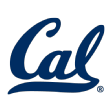
2018 record and rankings: 7-6 (No. 56 in S&P+, No. 52 in FPI)
2019 S&P+ projection: 5.4 wins (No. 60)
2019 FPI projection: 4.8 wins (No. 55)
Strength: You can’t score on Cal. In 2016 under Sonny Dykes, Cal ranked 107th in defensive S&P+. Just two years later, in Justin Wilcox’s second year in charge, the Bears ranked 13th. They pulled this off with a lineup of mostly sophomores and juniors. Half the two-deep in the front seven returns, and virtually all of the secondary is back. There is massive star power in players such as linebacker Evan Weaver, rush end/OLB Tevin Paul, corners Camryn Bynum and Elijah Hicks, and safeties Ashtyn Davis and Jaylinn Hawkins. This is a deep and absurdly well-coached unit, one that will likely give Pac-12 foes fits once more.
Weakness: Cal can’t score on you. In 2016, the Bears were 22nd in offensive S&P+. In 2018, they were 118th. Their one skill was avoiding third-and-longs, but that didn’t matter because they stunk on third-and-medium, and they couldn’t stumble into any easy points via big plays (12 gains of 30-plus yards all season, 127th in FBS). They also turned the ball over more than any other team in the country and blew most of the scoring chances they managed to create (129th in points per scoring opportunity). They had one of the best defenses in college football and needed three wins by three or fewer points to end up bowl-eligible.
Also, the Bears have to replace eight offensive starters. Granted, that seems harder when you’re losing eight starters from a good unit, but it doesn’t make improvement any easier.
Opportunity: Opponents’ offensive transition. After a season opener against FCS’ UC Davis, each of Cal’s first four FBS opponents is starting a new QB (Washington, Arizona State), breaking in a new offensive coordinator (North Texas) or both (Ole Miss). That could give the Bears’ defense a chance to make life really difficult and possibly start 4-1. That would be immensely helpful when it comes to returning to the postseason. They are, per both S&P+ and FPI, a projected underdog in five of their last six games.
Threat: Few sure wins. Cal is a projected double-digit favorite against UC Davis and Oregon State and has an eight-point advantage over North Texas. The Bears are at least an eight-point underdog in five games, and four are relative toss-ups. They might have to go at least 3-1 in the toss-ups to reach a bowl. There’s no margin for error.
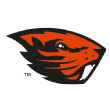
2018 record and rankings: 2-10 (No. 111 in S&P+, No. 104 in FPI)
2019 S&P+ projection: 2.6 wins (No. 105)
2019 FPI projection: 3.1 wins (No. 84)
Strength: Offensive efficiency. You might not have noticed (for reasons we’ll get into in a moment), but Oregon State’s offense was downright solid in Jonathan Smith’s first season as head coach. The Beavers were 43rd in marginal efficiency, quarterback Jake Luton completed 63% of his passes, and backs Jermar Jefferson and Artavis Pierce flashed major open-field pop.
Both backs return, as does Luton (if he can fend off Nebraska transfer Tristan Gebbia for the starting job). All but one receiver is back, and junior Isaiah Hodgins might be one of the nation’s more underrated wideouts. There is some turnover up front, but signs point to another season of decent offensive output.
Weakness: Almost the worst defense imaginable. The S&P+ rankings boast an extra level of conference adjustments that makes it really, really hard for a power conference team to rank really low overall. But the OSU defense overcame this adjustment to rank 126th.
This was equal-opportunity awfulness: 130th in rushing marginal efficiency, 126th in passing marginal efficiency, 128th on standard downs, 129th on passing downs. The Beavers allowed at least 34 points against every FBS opponent on the schedule. Decent offense can’t overcome historically bad defense.
Opportunity: Shootout potential. It bears mentioning that a couple of potential starting safeties (David Morris and Omar Hicks-Onu) return after missing 2018 and that the linebacking corps, with OLBs Hamilcar Rashed Jr. and Andrzej Hughes-Murray (combined: 17 tackles for loss) and a couple of blue-chip transfers, could be legitimately solid. Still, it’s hard to pretend that OSU is suddenly going to field a legitimately solid defense. The good news is that few opponents will be, either. Only three opponents are projected to rank better than 39th in defensive S&P+, and six are at 60th or worse. At the very least, a solid OSU offense and less-horrible defense could make more games interesting for a while.
Threat: Another lost season. The 2018 season certainly qualified as a Year Zero for Smith, but unless the defense improves more than expected, this is looking like Year Zero Point Five. S&P+ projects OSU as at least a 13-point underdog in each of its last nine games, and FPI isn’t far behind in that projection. The longer you wait to show any major progress, the harder it becomes to ever show progress.
Pac-12 South
Jump to a team:
Utah | USC | Arizona State
Arizona | UCLA | Colorado

2018 record and rankings: 9-5 (No. 17 in S&P+, No. 20 in FPI)
2019 S&P+ projection: 8.9 wins (No. 17)
2019 FPI projection: 8.6 wins (No. 22)
Strength: A devastating defensive front. Kyle Whittingham teams have, more often than not, been defined by defense (well, special teams too). The Utes have ranked 38th or better in defensive S&P+ for 12 straight years, and they’ve graded out better on defense than offense every single year.
The offense has its own intriguing pieces in 2019, but the defense will still be the headliner. That’s just how things work when, a year after ranking eighth in rushing marginal efficiency and second in stuff rate (run stops at or behind the line), you return almost every defensive lineman.
Last season’s top four ends and top three tackles all return, led by a trio of dynamite seniors in end Bradlee Anae (15.5 tackles for loss, eight sacks) and tackles John Penisini and Leki Fotu (combined: 12.5 TFLs, five sacks). There’s turnover at linebacker, but this line will be one of college football’s best.
Weakness: Minimal explosiveness. At full strength, the Utah offense can be all sorts of efficient. Zack Moss‘ rushing success rate (53%) was top-notch, and Utah makes efficient use of its inside receivers (Britain Covey, Jaylen Dixon, Samson Nacua).
Big plays were minimal last season, though. Utah enjoyed only 26 gains of 30-plus yards, 77th in FBS and fifth in the Pac-12 South. Dixon was the only primary target to average more than 12 yards per catch.
Opportunity: An untapped offensive ceiling. Utah’s offense leaped from 111th in offensive S&P+ to 36th in a single month but then both Moss and quarterback Tyler Huntley went down in short succession. The Utes still managed to beat Oregon and nearly beat Washington in the conference title game, but we barely caught a glimpse of what they might be capable of at full strength.
Huntley, Moss and most of the receiving corps are back, and though three line starters are gone, four players with starting experience return. It’s time to find out what we missed.
Threat: Two huge road trips. The defending division champs begin the season with the most margin for error in the South. With a few leaps of faith, we can turn either USC or UCLA into a contender, but most of Utah’s talent base returns. Still, trips to USC (Sept. 20) and Washington (Nov. 2) loom large. Lose in L.A., and the division race remains awfully crowded for a while.

2018 record and rankings: 5-7 (No. 34 in S&P+, No. 46 in FPI)
2019 S&P+ projection: 6.5 wins (No. 29)
2019 FPI projection: 6.7 wins (No. 25)
Strength: The potential. Always the potential. USC will be led by sophomore and former blue-chipper JT Daniels at quarterback. He’ll be surrounded by experienced former star recruits throughout the skill corps. The defense, though less experienced, will boast recent four- and five-stars wherever you look.
For as poorly as Clay Helton’s Trojans played last season, they are just one year removed from a run of 21 wins in 24 games. They always recruit well. The potential is never that far from the surface. If a combination of new offensive coaching and better health on defense (the two-deep got detonated last year at both LB and DB) helps USC meet that potential, then poof, the Trojans are contenders again.
Weakness: A lack of known strengths. The potential was there last season too, and USC lost five of its last six games and finished 5-7. Worse, it wasn’t a single weakness or breakdown that led to this. The problem was that the Trojans just weren’t truly good at much. They stuffed the run pretty well and rushed the passer well in obvious pass situations, but there was almost no advanced statistical category in which USC ranked in the top 20. For a team with top-10 talent, that’s disconcerting.
The receiving corps, led by Tyler Vaughns, Amon-Ra St. Brown and Michael Pittman Jr., came close to living up to its billing and could be dynamite in new coordinator Graham Harrell’s spread-out, pass-happy scheme. But having potential doesn’t matter if you don’t provide enough glimpses of it.
Opportunity: The element of surprise. USC plays five teams projected in the S&P+ top 40, and four are in the first half of the season. Each of the first four games on the schedule is projected within one possession.
There are two ways to look at this. The optimist would say that this gives Harrell’s new offense a chance to make a maximum impact before opponents start to adjust. If the Trojans beat Stanford and Utah at home in September, they’re the new South favorites.
Threat: Everything goes off the rails immediately. The pessimist would note that USC could be trying to figure out its offense and what works best when the season begins. With this schedule and a head coach on the hot seat, bad things could snowball pretty quickly. A 1-1 start could easily become “1-5 with an interim coach.”
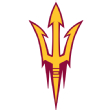
2018 record and rankings: 7-6 (No. 52 in S&P+, No. 41 in FPI)
2019 S&P+ projection: 6.7 wins (No. 49)
2019 FPI projection: 7.0 wins (No. 36)
Strength: The Herm basics. Herm Edwards’ general philosophy as an NFL head coach was to run the ball a lot and not give opponents anything easy on defense. Aesthetically pleasing? Not really. But it can win you games. In 2018, perhaps the Sun Devils’ biggest strengths were (a) running the ball efficiently and (b) not giving opponents anything easy on defense.
Eno Benjamin was the primary reason for (a). The junior rushed 300 times for 1,642 yards and a 48% success rate. Quarterback Manny Wilkins and receiver N’Keal Harry are both gone, which is a concern, but if Benjamin stays healthy, he has a seasoned line in front of him and could do similar damage. With virtually every receiver but Harry back, there are still fun play-action weapons.
ASU’s strong big-play prevention was remarkable, considering how much shuffling the Sun Devils had to do at both linebacker and defensive back. But with a freshman-heavy linebacking corps (Merlin Robertson and Darien Butler combined for 115.5 tackles, 16.5 for loss) and a sophomore CB (Chase Lucas) and freshman safety (Aashari Crosswell) serving as ASU’s best playmakers in the secondary, the Sun Devils ranked 28th in marginal explosiveness. Now those units have quite a bit more experience.
Weakness: The bend-don’t-break bent too much. ASU was 105th in marginal efficiency allowed — 92nd rushing and 108th passing — and that was with nose tackle and fourth-round pick Renell Wren. Big-play prevention is great, but if opponents remained patient, they could score plenty of points. Six of the last eight opponents, in fact, scored 28-plus.
Opportunity: A good schedule for breaking in a new QB. ASU’s schedule is back-loaded. Of five projected top-40 teams per S&P+, only one shows up in the first five games. That will give the new starting QB — junior Dillon Sterling-Cole? blue-chip freshman Jayden Daniels? — time to figure things out before a tricky stretch run.
Threat: Depth issues everywhere. ASU’s starting 22 should be solid and far more experienced than last season. But due to graduation and transfer, the second string could be loaded with freshmen and unknowns. That’s doubly true for the defense, which will replace four of last season’s top nine linemen, four of nine linebackers and three of nine DBs. Avoid a targeted run of injury, and maybe this won’t matter, but this threat will loom just off-camera all season.
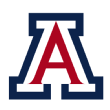
2018 record and rankings: 5-7 (No. 58 in S&P+, No. 64 in FPI)
2019 S&P+ projection: 6.2 wins (No. 52)
2019 FPI projection: 5.4 wins (No. 51)
Strength: Massive big-play ability. Kevin Sumlin’s first season at Arizona was disappointing. Star quarterback Khalil Tate struggled through injuries and system change, and the Wildcats blew a late lead against rival ASU to finish 5-7. But they were still a scary team to play because there could be explosions at any moment. Despite playing only 12 games, the Cats gained 30-plus yards 40 times, 12th in FBS. Again, that was without a fully weaponized Tate.
The receiving corps is dealing with turnover (four of those top six are gone), but Cedric Peterson and Stanley Berryhill III combined for 32 catches, 486 yards (15.2 per catch) and six touchdowns. Plus, running back J.J. Taylor and a healthy Tate could more than offset those losses in the big-play department. There’s no guarantee of consistency here, but Arizona isn’t going to be any less scary on offense.
Weakness: The red zone. You could boil football down to two essential components: creating scoring chances and converting them. Arizona was pretty good at the former — the Wildcats avoided third-and-longs and forced a lot of them on their opponents, and again, they won the big-play competition — but when it came to turning chances into points, the Cats were among the worst in the Pac-12.
Arizona averaged just 4.5 points per scoring opportunity (first downs inside the opponent’s 40) last season (81st in FBS) and allowed a ghastly 5.2 (119th). That’s a deficit of 0.7 points per trip, and it meant that Arizona had to create about six scoring opportunities to match what opponents scored in five. That adds up pretty quickly.
Opportunity: Experience. Arizona broke in a new coach with a pretty young team last year: two sophomore RBs, three freshman/sophomore starters on the offensive line, six freshmen/sophomores in the rotation in the defensive front six, three key sophomores in the secondary. What’s the best thing about sophomores? They become juniors!
Threat: A lack of sure wins. If Tate’s Tate again and the defense is less of a weakness, this team could have a high ceiling. But the Wildcats face conference road games against USC, Stanford, Oregon and Arizona State, and after two early nonconference games, S&P+ projects that the Cats are more than five-point favorites in just one game (Oregon State). The ceiling’s high, but a decent run will require lots of close wins.
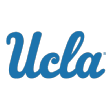
2018 record and rankings: 3-9 (No. 76 in S&P+, No. 68 in FPI)
2019 S&P+ projection: 4.9 wins (No. 63)
2019 FPI projection: 7.8 wins (No. 20)
Strength: The groundwork for a good ground game. Not a lot went consistently well for Chip Kelly in his first year back in the college coaching ranks. But when Joshua Kelley emerged as the go-to back in October, we caught a sustained glimpse of what the UCLA offense might become.
-
First four games: Kelley 23 carries, UCLA 17.0 points per game
-
Next four games: Kelley 97 carries, UCLA 25.5 points per game
-
Last four games: Kelley 105 carries, UCLA 31.3 points per game
The UC Davis transfer wasn’t insanely explosive, but his 48% success rate dwarfed that of other UCLA backs (35%). For bonus points, he rushed for 289 yards against USC. Add an experienced line and a more stable QB situation — likely starter Dorian Thompson-Robinson is mobile in his own right, and he’s no longer an overwhelmed true freshman — and the potential for offensive improvement is high.
Weakness: No disruption. Stuff rate is the percentage of non-sack carries stopped at or behind the line of scrimmage. UCLA’s defense ranked 122nd.
Sack rate is the percentage of pass attempts that result in sacks. UCLA ranked 126th.
Havoc rate is your total number of tackles for loss, passes defensed and forced fumbles divided by total plays. UCLA was 110th.
This defense had no way of knocking you off-course last season, and with an offense that wasn’t consistent enough to scare opponents, this extreme bend-don’t-break defense usually snapped.
This time around, the Bruins are infinitely more experienced — of the 22 players who made at least 10 tackles, 18 return — and that will help. But there are only about three known playmakers (linebackers Krys Barnes and Keisean Lucier-South, cornerback Darnay Holmes). That has to change.
Opportunity: The second-year leap. Continuity is Kelly’s friend in 2019, and that, plus the fact that a new coach’s culture starts to take effect in his second season, could contribute to a major leap. It happens for a few coaches each year, and FPI is projecting it to happen in L.A.
Threat: That road slate. After last season’s dismal 3-9 campaign, going just 6-6 would represent solid progress. But if the Bruins were to leap all the way into South contention, the schedule will probably hold them back. Their conference road games: Washington State, Arizona, Stanford, Utah, USC. They could win out at home and still struggle to break .500 in conference play.
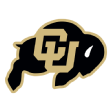
2018 record and rankings: 5-7 (No. 80 in S&P+, No. 69 in FPI)
2019 S&P+ projection: 4.8 wins (No. 68)
2019 FPI projection: 4.0 wins (No. 63)
Strength: Montez to Shenault. New head coach Mel Tucker is attempting to Georgia-fy Boulder. The former Georgia defensive coordinator brought a healthy chunk of Kirby Smart’s lower-level staff with him to Colorado, including both coordinators (Jay Johnson on offense, Tyson Summers on defense). Granted, these are very different situations — CU’s never going to have the talent advantages that Georgia always boasts — but both Johnson and Summers had previous pre-Georgia coordinator experience, at least.
Johnson’s best moments as a playcaller at Southern Miss, Louisiana-Lafayette and Minnesota have come when he had a mobile QB and physical run game at his disposal. It’s hard to confidently say that he’ll have that, but he will have one heckuva matchup advantage on the outside whenever quarterback Steven Montez looks to throw to Laviska Shenault Jr. Shenault exploded out of the gates in 2018, with 86 catches for 1,011 yards and six touchdowns. Johnson could use Shenault and possession man K.D. Nixon as his base offense if an inexperienced run game doesn’t do much.
Weakness: The run game probably won’t do much. CU ranked a horrid 124th in rushing marginal efficiency last fall and must replace its top three running backs and a couple of line starters. Granted, it’s a lot easier to lose players whose production is the very definition of “replaceable,” but sophomore Alex Fontenot is the most experienced back on the roster. He had 11 carries last season.
Opportunity: Something to build around. Tucker inherits a pretty young squad — the only units with non-replaceable seniors are QB and the secondary. A lot of underclassmen will see the field, and some — juniors Mustafa Johnson (DE) and Nate Landman (LB), sophomores Carson Wells (LB), Terrance Lang (DE) and William Sherman (LT) — could carry leadership roles into 2020, a.k.a. Second-Year Leap Territory. It probably says something that this “opportunity” has little to do with 2019, of course.
Threat: A lost year. S&P+ projects CU as a favorite in only two games and FPI in three. There are only a couple of decent win opportunities after Oct. 5. A Year Zero situation is fine, but you’d rather finish stonier than you started, like Nebraska or UCLA did last season. It’s going to be pretty difficult for Tucker to pull that off.

